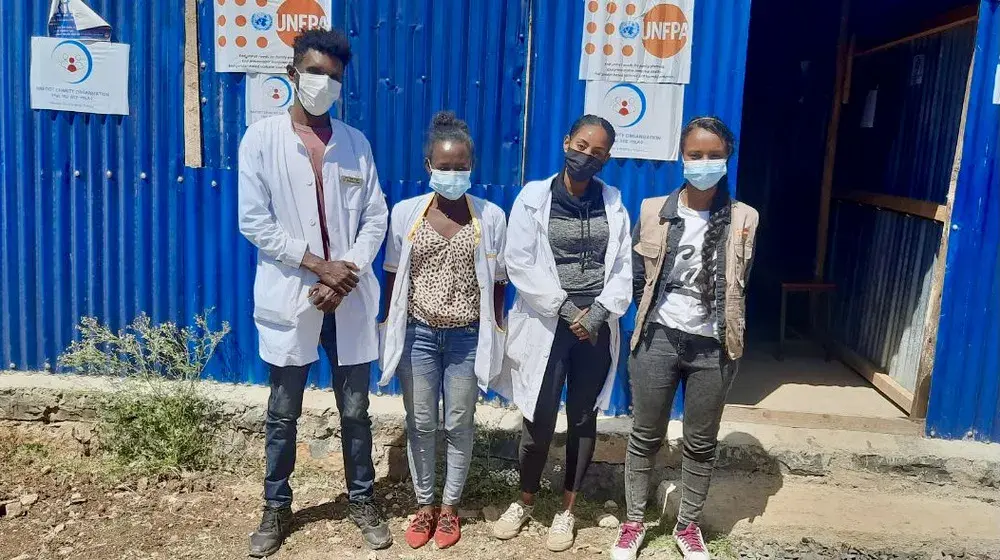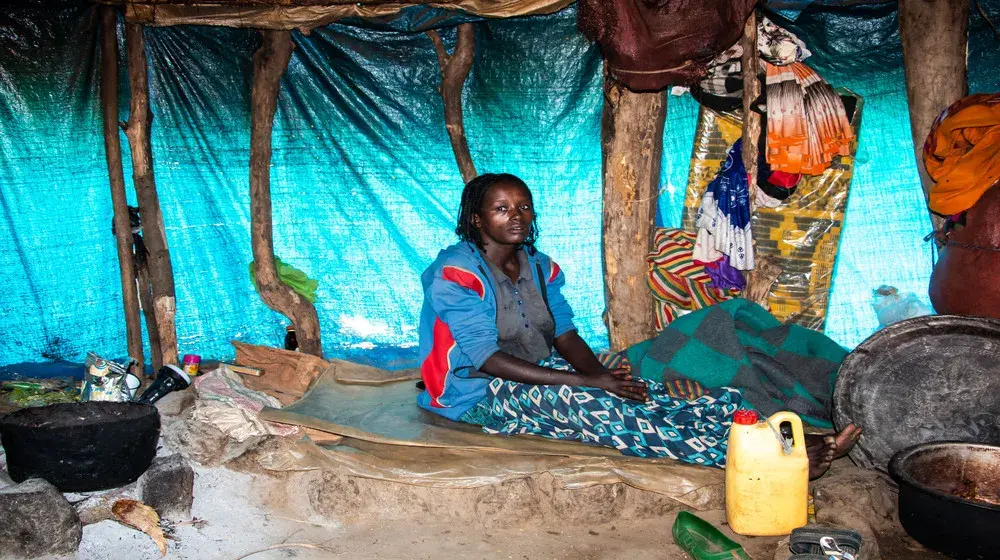Basoliben District, Amhara Region of ETHIOPIA: In Ethiopia, rural women like Fikre Molla, who spent their last days of pregnancy in Maternity Waiting Homes and gave birth at a health institution, are increasing in number.
Maternity waiting homes are contributing to increase in the utilization of maternal health services particularly among women living in rural areas where distance, topography, and road access are acting as barriers to timely access health institutions.
The Ethiopian Demographic and Health Survey of 2016 shows that long distance to health facility was a serious problem in accessing health facilities by 59.8 percent of women from rural areas compared to 17 percent of women from urban areas. This has contributed to the low percentage of skilled birth attendance which stands at a little more than 19 percent among rural women.
Tens of thousands of pregnant women like Fikre are receiving a comprehensive package of services during their stay in the maternity waiting homes eventually delivering with the assistance of skilled birth attendants.
“I first heard about the benefits of the Maternity Waiting Home from the Health Extension Workers [community health workers] in my locality. Starting from the day I arrived here in my last weeks of my pregnancy, I got all the treatments from the health professionals,” says Fikre.
Despite the efforts made by the Government at expanding Health Centres and other health facilities as well as increasing availability of ambulances, access to skilled birth attendants has long remained a major problem. Pregnant mothers, including those who had been following-up antenatal care at health facilities, were giving birth at home because of delays related to transportation and others particularly during rainy seasons.
Although Ethiopia’s experiment with maternity waiting homes dates back to four decades, it was only in recent years that these structures came to be part of the Government health strategy – namely the Health Sector Development Plan and later the Health Sector Transformation Plan – at reducing the high maternal and neonatal mortality and morbidity. The construction of maternity waiting homes has in recent years become one of the major investments in the Primary Health Care Units, especially Health Centers. The Federal Ministry of Health issued a guideline to standardize the establishment of maternity waiting homes whose expansion has been very fast. According to the national Emergency Obstetric and Newborn Care assessment conducted in 2016, the proportion of health facilities (health centers and primary hospitals) with either a standalone maternity waiting home or a dedicated room for expectant mothers to wait until labor starts has reached 53 percent.
UNFPA has strengthened 60 maternity waiting homes in health facilities located in target districts in six regions across the country. The support included procurement and distribution of essential materials that are important for maternity waiting homes to function.
The contribution of local communities has been immense to the successes being registered by the Maternity Waiting Homes in promoting safe delivery. Communities have been constructing the Maternity Waiting Homes, contributing grains, and identifying and sending pregnant women to health institutions. Health centres are currently using community contributions to cover much of the costs of running maternity waiting homes including food for the expectant mothers.
“Community contributions for the maternity waiting homes has been increasing from time to time,” says Binkoye Biyaregelegn, member of the community committee coordinating community support for the maternity waiting homes. At the beginning, contributions were only in kind like grains that are produced locally. Health Centres were expected to sell some of the collected grains and buy other necessary items. Later on, additional cash contributions by the community was introduced. “Currently, we are moving towards changing all contributions into cash in order to minimize the burden of transporting, storing, and selling grains,” Binkoye notes.
Communities make all the necessary arrangements so that the expecting mothers who are staying at the maternity waiting homes don’t miss home. “The community conducted all the traditional practises before and after I gave birth so it felt like home for me,” Fikre says happily. She goes on to say that the health professionals explained to her about what she should do to ensure the health of her new-born and the traditional harmful practices that she is not supposed to do.
Maternity waiting homes are contributing their fair share in the country’s efforts at reducing maternal and neonatal mortality and morbidity during labor and delivery in recent decades. The maternal mortality ratio has declined from 871 deaths per 100,000 live births in 2000 to 412 deaths per 100,000 live births in 2016, according to the Ethiopian Demographic and Health Survey while the perinatal mortality during the same period declined from 52 to 33.
“We believe that maternity waiting homes will decrease maternal death not only for those pregnant women who live far away but for those living nearby who need follow-up,” comments Midwife Biniyam Wale of the Korke Health Center in the Basoiben District where Fikre delivered. He thereby suggested the important role the Maternity Waiting Homes are also playing in strengthening the referral linkage in the health system in addressing complications.
The current Reproductive Health Strategic Plan of Ethiopia intends to establish maternity waiting homes in 75 percent of health centers by 2020.
Fikre who is preparing to go home with her new-born says confidently “now if I come across a pregnant woman I will inform her about the maternity waiting home, that she should stay here for some weeks before her due date to have follow-up, rest and deliver safely.”




